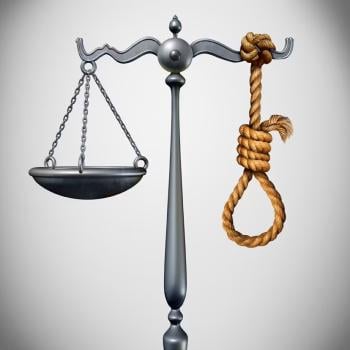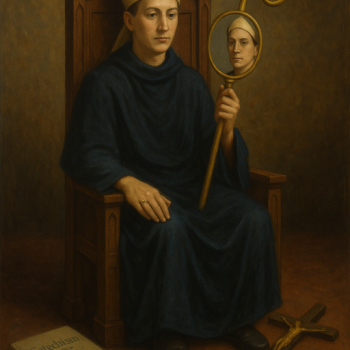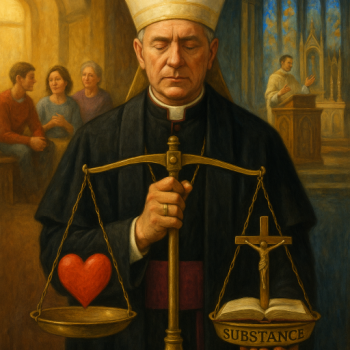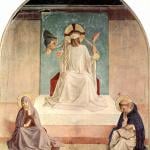The Synodal Path to schism in Germany
In past articles, I addressed different aspects of the call for women’s ordination in the Catholic Church. I addressed The Jesus Prerogative, why the Catholic Church does not ordain women, and the biblical case for women’s ordination. I now turn to what many consider the last hope for real theological change on the matter—The Synodal Path. Particularly, I respond to the document produced by the German Synodal Forum titled, Women in Ministries and Offices in the Church. I examine the argument presented in the document to see if they meet the standard for authentic Catholic doctrinal development. Does the German Synodal Forum make good points that the broader Church need follow? Or does this document reflect yet another attempt at theological corruption in the guise of authentic doctrinal development?
For the sake of clarity, I quote directly from the document and add my commentary after. I then pose further questions I hope those in the German Synodal Forum address in future publications.
The Ancient Cabal Against Early Christian Women
Due to a re-evaluation of cultic purity, the repression and removal of female members from the public sphere of the Church began at the latest from the 2nd Century onwards. The Church thus took a path in which the charisms and vocations of women were increasingly ignored and could not be used to build up the Christian community. This is also linked to a history of pain that has led to experiences of discrimination, misogynistic polemics and a lack of recognition for women with a vocation in previous centuries and up to the present day.
Right off the bat, this document (from now on referred to as WMOC) posits the exclusion of women from public ministry as part of an early Church cabal to repress women out of a sense of “cultic purity.” What is “cultic purity?” WMOC fails to elaborate further. Clearly, the early Church after 100 AD hated women and sought to repress and remove them from public ministry. St. John, the last living Apostle, probably started this cabal himself while in exile on Patmos. To any informed reader, this is an attempt to smear the early Church and to lay a foundation for an argument from silence.
Questions: Part 1
- What is “cultic purity?”
- Please provide evidence that shows early Christians repressed and removed women from public ministry?
- What of the example of Jesus before 100 AD? Was He part of this cabal, too?
Schism Ultimatum
If there is no discussion of the arguments, and if the demand for obedience without insight takes its place, there is a danger of a split taking place in the Christian community of faith.
Immediately after the revelation of an ancient cabal to repress and remove women, WMOC makes a threat, a threat to tear the German Church apart (if this issue is not discussed and considered). The Church is no stranger to theological ultimatums originating in Germany. Moreover, while Martin Luther disagrees with WMOC theologically, he would recognize the spirit of its ultimatum.
Questions: Part 2
- What does the “demand of obedience without insight” mean? The Church has addressed this issue continuously (and definitively) over the past half century.
- If this “insight” does not go WMOC’s way, will the German Church split from the Catholic Church?
The Church Must Listen (and Get with the Times)
The exclusion of women from the sacramental ministry requires a justification that is amenable to human reason, whilst respecting the traditional form of God’s action. Women who consider themselves to have been called, and who obviously have charisms that also recommend them for leadership in the sacramental ministry, must not be excluded. If they are so, then the Church is guilty before God in Her ministry of proclaiming the Gospel because His spiritual gifts are not respected. The theological argumentations presented so far in the available magisterial documents are therefore to be subjected to a critical review in the context of the universal Church, in which scholarly expertise is to be sought. In addition to the theological disciplines, philosophy as well as the cultural and social sciences should also be involved in the process of reflection in view of hermeneutical preconception.
Please forgive the overlong quotation. Also, please read the full paragraph in the document link. It states the Church’s primary purpose is to proclaim the Gospel, which is true. It then expands on this truth by an appeal to foreign authorities in the hopes that such an appeal adds substance to a foundation built on conspiracy and silence. What I mean by foreign authorities are those scholars that exist outside the teaching charism of the Magisterium. Furthermore, most troubling is the appeal to “cultural and social sciences” experts. The message is clear: the Church must get with the times and listen to diverse voices as it looks at the issue of women’s ordination.
Questions: Part 3
- Why didn’t Jesus appoint women Apostles if this was crucial and spare the Church the stain of guilt by future generations of Christians?
- What specific philosophical, cultural, and sociological experts does WMCO wish to turn to in place of the Magisterium?
- What gives these “experts” the credibility to speak on things potentially binding on the consciences of every Catholic on earth?
Progressive Theological Experts vs. the Magisterium
There may be times when knowledge of faith is brought into the universal Church from a local church. It has been demonstrated in academic theology for decades that there is a significant discrepancy between the arguments that are put forward in the Roman Catholic magisterial documents that lead to the exclusion of women from sacramental ministry, and the insights gained on the basis of hermeneutical standards that are presupposed in the research and teaching of theology.
Moreover, WMCO doubles down on the need for foreign input by stating that many progressive theologians disagree with the Magisterial teaching on women’s ordination and that this needs to cease. The Magisterium needs to sit down and take notes from such experts. By not listening to modern progressive theologians, the Magisterium continues in the sin of excluding women from sacramental ministry. They continue in the “cultic purity” cabal instituted in the 2nd century and recently uncovered by the new hermeneutical approach of modern progressive theologians.
Questions: Part 4
- What does WMCO mean by “knowledge?”
- Are there any limits to what “knowledge” the local church brings into the universal Church?
The Synodal Path vs. Official Church Teaching
The daring recent beginning of a period of theological argumentation on the Synodal Path in Germany with regard to the participation of women in the sacramental ministry presupposes that the doctrinal texts currently available have not yet gone so far as to be finally binding. It should give pause for thought in the controversy surrounding this question that a large number of believers in Christ refuse to accept the assumption that only a man could preside over the Eucharistic liturgy because of his natural likeness to Jesus. The Second Vatican Council teaches that the “sensus fidelium” (“sense of faith of the faithful” as defined in Lumen Gentium 12) cannot err.
To translate: there exist those in the Catholic Church who do not agree with the Magisterium on women’s ordination, therefore, according to senus fidelium, these dissenters cannot err. It should give pause that the key word in senus fidelium is fidelium, or “faithful”. Those who dissent from the Magisterium do not qualify as “faithful,” but unfaithful, to the Church’s teaching authority.
Clarification on Sensus Fidelium
In place of questions, a clarification is required. Below, I directly quote from the Catechism of the Catholic Church on senus fidelium. It states in section 91-93:
The supernatural sense of faith
91 All the faithful share in understanding and handing on revealed truth. They have received the anointing of the Holy Spirit, who instructs them and guides them into all truth.
92 “The whole body of the faithful. . . cannot err in matters of belief. This characteristic is shown in the supernatural appreciation of faith (sensus fidei) on the part of the whole people, when, from the bishops to the last of the faithful, they manifest a universal consent in matters of faith and morals.”
93 “By this appreciation of the faith, aroused and sustained by the Spirit of truth, the People of God, guided by the sacred teaching authority (Magisterium),. . . receives. . . the faith, once for all delivered to the saints. . . the People unfailingly adheres to this faith, penetrates it more deeply with right judgment, and applies it more fully in daily life.” [emphasis added]
Therefore, the key to sensus fidelium is not the number of Catholics that agree or disagree but that bishops and the faithful manifest universal consent in matters of faith and morals. Both bishop and faithful must agree to manifest sensus fidelium. Sensus fidelium, when used to justify dissent, represents a theological contradiction.
Contra Inter Insigniores and Ordinatio Sacerdotalis
Furthermore, in response to official Church teaching on women’s ordination (Inter insigniores and Ordinatio sacerdotalis), WMOC responds with:
Those who encounter the risen Jesus Christ are called to the apostolic ministry, and not all apostles belong to the group of twelve. The symbolism of the number twelve is a reference to God’s lasting Covenant with the people of Israel and its twelve tribes. Exegetical studies also distinguish between the knowledge and self-awareness of the earthly Jesus and the post-Easter tradition.
Who can dare to describe in a historical sense exactly how Jesus’ last meal took place? Are the traditional gestures of Jesus at the meal, and the interpretation of His imminent death, not possibly more to be enhanced in theological terms than the question of whether this meal was attended by men only – with a view to establishing a structure of offices within the Church in the future? Other unanswered questions include reflections on the relationship between the formation of tradition, which already began in the New Testament, in correspondence with the gender roles of the time, which need to be reconsidered today in view of changed experiences.
The crux of these arguments is this: Jesus’ choice of twelve men as Apostles reflects only the times Jesus lived while on earth. His choice is also reinterpreted to only reflect God’s covenant with the twelve tribes of Israel. The early Church also falls into this relative time trap and excludes women from ordained ministry from the start. Therefore, “in the view of changed experiences,” both Jesus and the early Church require correction. The modern Church MUST correct the wrongs perpetrated by Jesus and the early Church on women.
Questions: Part 5
- Is there a real difference between the pre- and post-Easter Jesus?
- Not all who proclaim the Gospel require ordination. Why then do women need it to proclaim the Gospel?
The Ascendant Foreign Voice
The critical revision of the argumentations in the Roman Catholic magisterial documents that have been put forward can be linked to the path into the future: Conversations are to be held with baptised people in all countries and cultures, in a worldwide effort. Experiences with the official ministries of women in Christian ecumenism can be presented. Stories from and about women in ministry will be enriching. The proscription of the argumentative struggle for the participation of women in the sacramental ministry, as well as the attempts to exclude male and female representatives of specific argumentations from the space of orthodox ecclesiality, are to be brought to an end.
In short, when the official doctrine of the Church refuses to change, the WMOC document presents ways to force it to change, including the threat of schism. Magisterial authority, the authority that refuses to change, needs to make way for other voices. Even voices from other Christian traditions, especially ones that already ordain women. Furthermore, the argument over women’s ordination must end in the affirmative—or else!
Questions: Part 6
- What if the Magisterium refuses to listen to The Synodal Path of Germany?
- Are those in The Synodal Path aware of other attempts at ultimatums in Church history? How did they turn out?
The Final Appeal
It is the doctrine, attested to in the Bible, namely that unity with Jesus Christ is founded in baptism, which abolishes the distinction between “male” and “female” at the level of salvation (cf. Gal 3:28). This results in a distinction, led by the Holy Spirit, between the divine ground of renewal and the earthly form of the Church, which has become historical, as the place of experiencing redeemed existence.
In the final argument, WMOC appeals to St. Paul’s letter to the Galatians, verse 28, in which he states:
There is neither Jew nor Greek, there is neither slave[a] nor free, there is no male and female, for you are all one in Christ Jesus.
Conversely, St. Paul also stated the following:
Women should remain silent in the churches. They are not allowed to speak, but must be in submission, as the law says. If they want to inquire about something, they should ask their own husbands at home; for it is disgraceful for a woman to speak in the church. (1 Corinthians 14:34-35)
And
Let a woman learn quietly with all submissiveness. I do not permit a woman to teach or to exercise authority over a man; rather, she is to remain quiet. For Adam was formed first, then Eve; and Adam was not deceived, but the woman was deceived and became a transgressor. Yet she will be saved through childbearing—if they continue in faith and love and holiness, with self-control. (1 Timothy 2:11-15)
Some scholars contend St. Paul did not write 1 Timothy. Regardless, the thoughts expressed in 1 Timothy 2:11-15 reflect the same thoughts as 1 Corinthians 14:34-35. It appears another co-conspirator behind the evil cabal to exclude women from ordained ministry is found—the Apostle Paul!
Final Thoughts
Does WMOC stand up as a Catholic theological document in support of women’s ordination within the Catholic Church? No. This document relies on six unsupported innovations to support its claims. Namely:
- An ancient cabal of “cultic purity” within the Catholic Church to exclude women from ordained ministry,
- Proof of this cabal through a lack of evidence of women in ordained roles (an argument from silence).
- The blatant claim that Jesus and the early Church intentionally suppressed women and need correcting.
- An appeal to modern understandings of gender roles.
- An appeal to modern progressive theological opinion over that of the Church Magisterium.
- Finally, a threat of schism (an ultimatum) if WMOC demands go unheeded.
Furthermore, all six innovations lack any semblance to a valid Catholic argument for authentic Catholic theology. Therefore, each point represents a corruption of Catholic theology. I end this article with the words of St. Pope John Paul II on this issue from Ordinatio Sacerdotalis. Please comment below if you think he leaves the issue of women’s ordination unresolved.
Wherefore, in order that all doubt may be removed regarding a matter of great importance, a matter which pertains to the Church’s divine constitution itself, in virtue of my ministry of confirming the brethren (cf. Lk 22:32) I declare that the Church has no authority whatsoever to confer priestly ordination on women and that this judgment is to be definitively held by all the Church’s faithful.
Invoking an abundance of divine assistance upon you, venerable brothers, and upon all the faithful, I impart my apostolic blessing.
By the way, this is the proper use of sensus fidelium.
Like and follow me on Facebook and Twitter.













